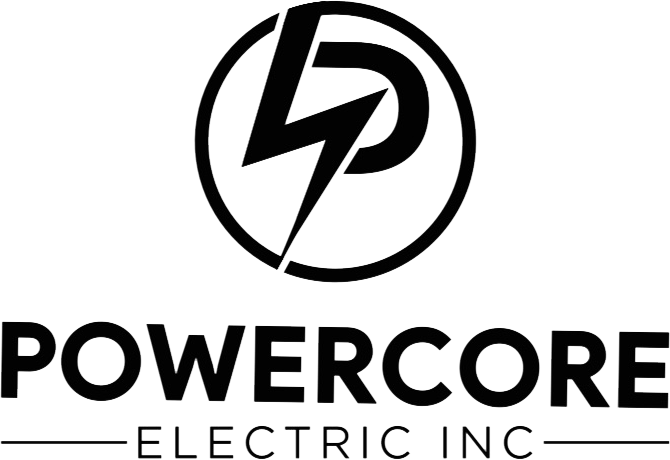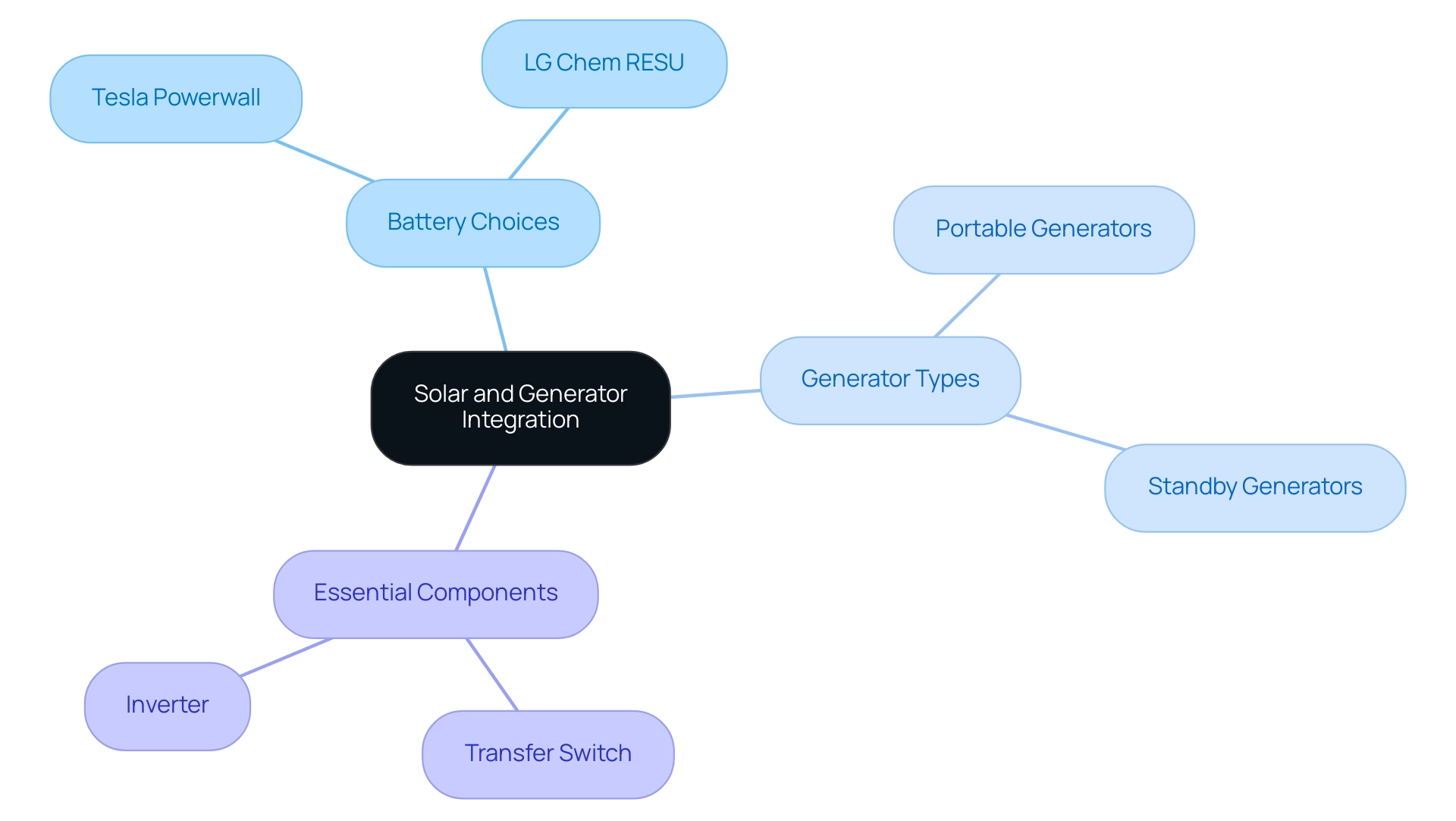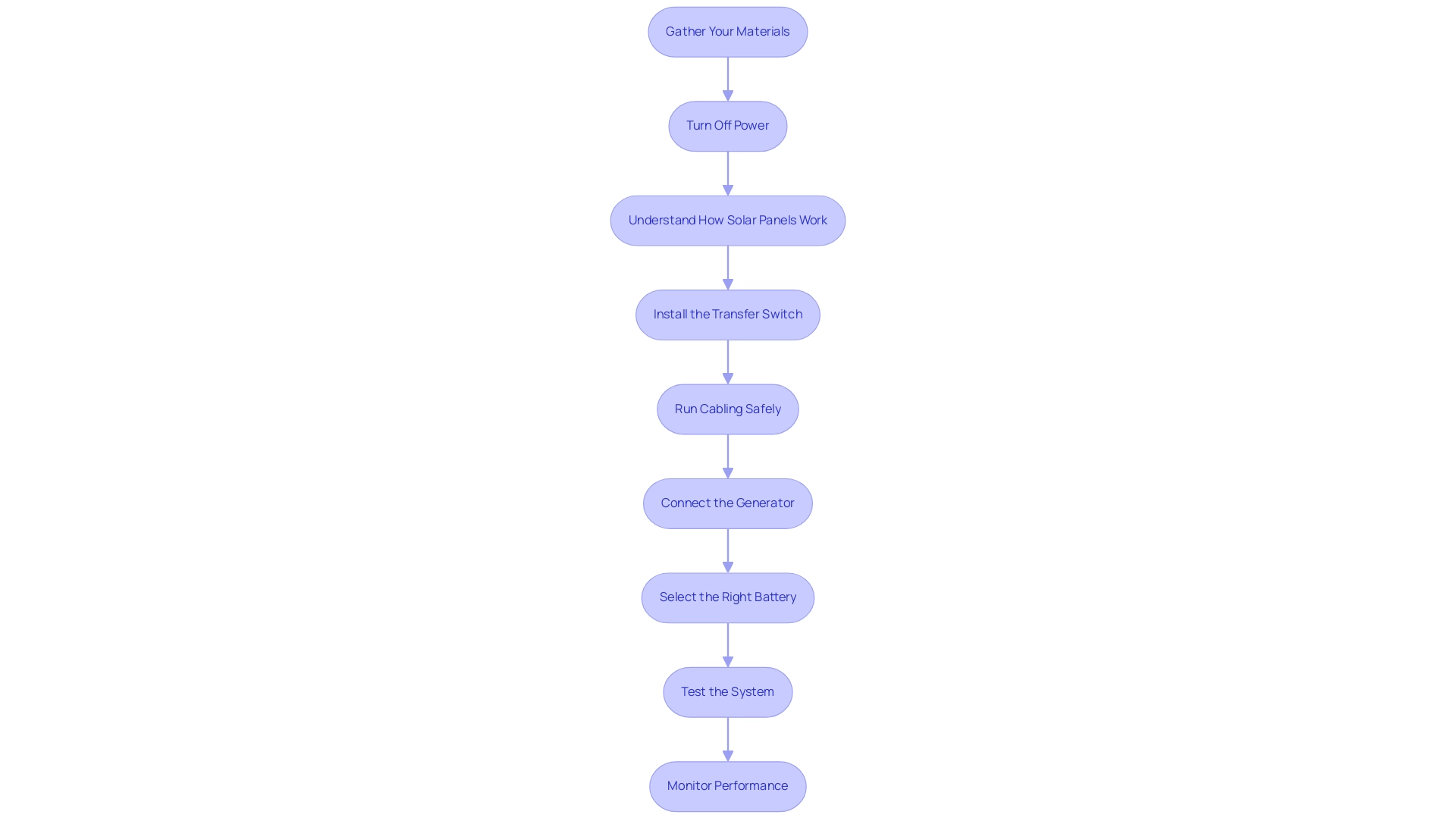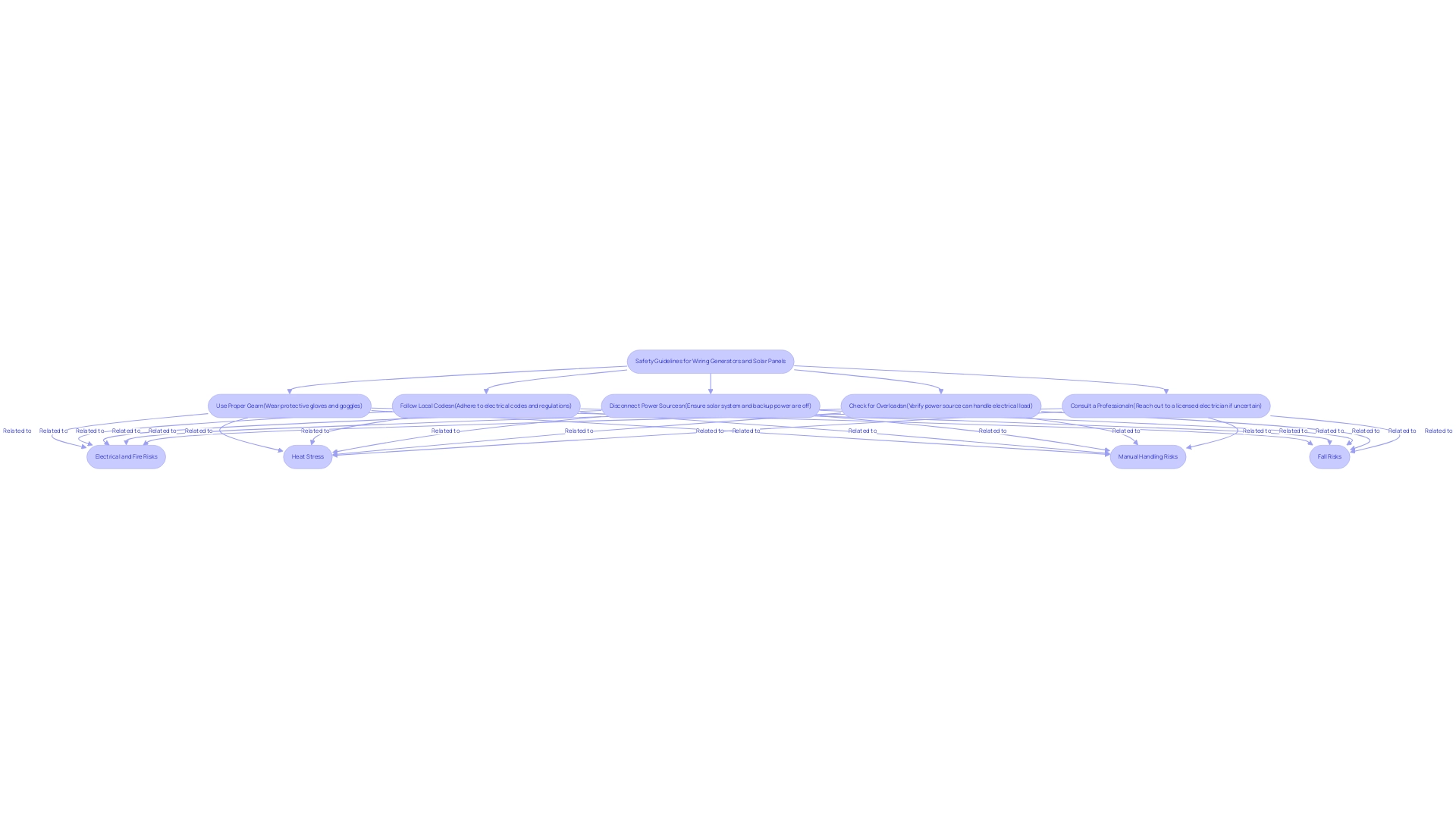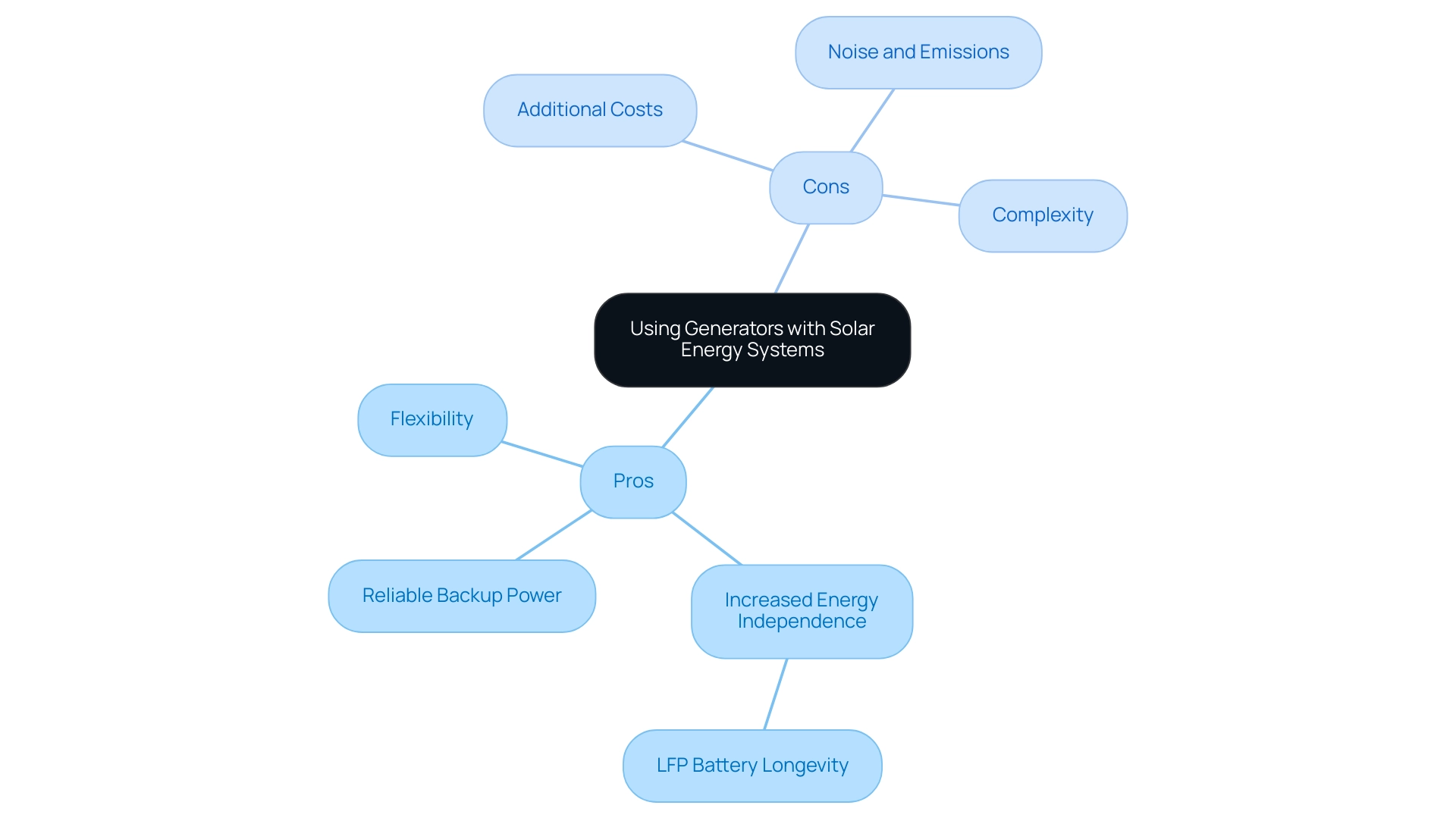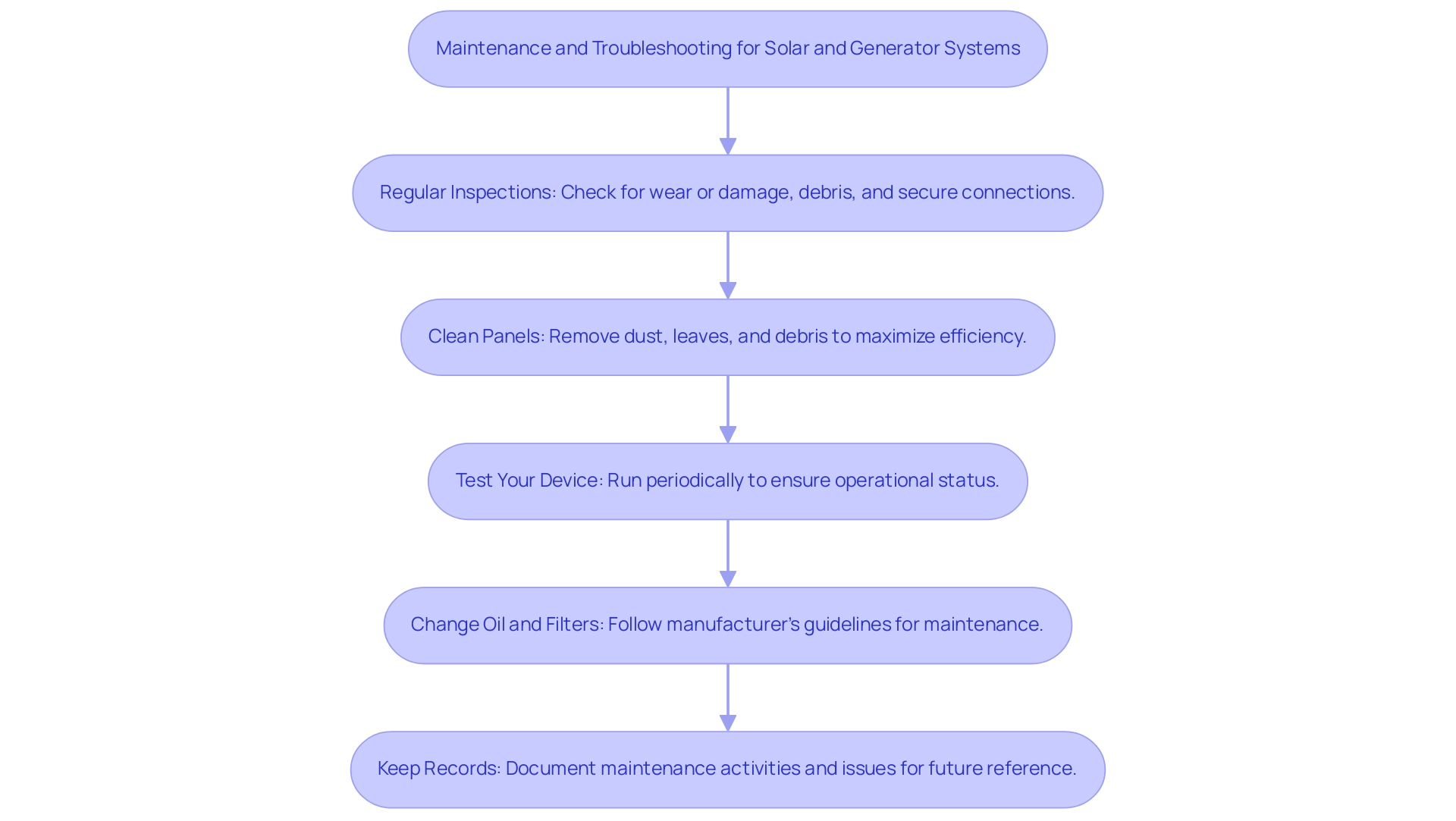Introduction
In the quest for energy independence and sustainability, many homeowners are turning to solar energy systems, often pairing them with generators for added reliability. This integration not only ensures a steady power supply during outages or cloudy days but also enhances the overall efficiency of energy use at home.
As the solar battery market continues to expand, understanding the nuances of combining these technologies becomes increasingly important. From selecting the right solar battery to navigating the installation process, this guide will illuminate the essential steps and considerations for effectively wiring a generator to your solar-powered home.
Whether you’re a seasoned DIY enthusiast or a newcomer to solar energy, this comprehensive overview will provide valuable insights to help make informed decisions and ensure a safe and effective setup.
Understanding the Basics of Solar and Generator Integration
Incorporating a power source with your renewable setup, particularly by learning how to wire a generator to a house with solar panels, is a wise approach to guarantee you have a dependable backup supply, especially during outages or on overcast days. Solar panels operate tirelessly to transform sunlight into electricity, but when the sun isn’t shining, a backup system steps in to keep your home powered. With the photovoltaic battery charger market anticipated to reach approximately $5.1 billion by 2030, the significance of renewable power systems and generators is increasing, emphasizing the necessity of making informed decisions in your power setup.
For Long Beach renters, understanding the best battery choices available can be essential for effective power storage, especially when taking into account the effect of unfavorable weather conditions on electricity supply. Notable options include:
- The Tesla Powerwall, recognized for its high capacity and seamless integration with photovoltaic panels
- The LG Chem RESU, which provides compact design and excellent efficiency
Familiarity with the different types of generators—like portable and standby—is essential to choose the best fit for your needs.
It’s also helpful to get acquainted with terms such as ‘transfer switch’ and ‘inverter,’ as these components play vital roles in your installation process. The International Renewable Energy Agency (IRENA) emphasizes the importance of education and training programs to prevent the widening of skill gaps in this sector. Understanding how to wire a generator to a house with solar panels means that these elements function in unison, simplifying the wiring and enabling you to make informed choices for your power arrangement.
Recent insights also reveal the growing popularity of Tesla home chargers and various government programs that support renewable energy adoption, providing additional resources for homeowners. With understanding like this, you’ll be well-prepared to manage the incorporation of a power source into your renewable system, ensuring peace of mind regardless of the weather.
Step-by-Step Guide to Wiring a Generator to Your Solar-Powered Home
- Gather Your Materials: Start your project by gathering all the essential tools and materials. You’ll need a generator, a transfer switch, wire connectors, and of course, your safety gear. Having everything available will make the process of learning how to wire a generator to a house with solar panels smoother and more efficient, ensuring a successful renewable power setup.
- Turn Off Power: Safety first! Ensure to switch off your energy setup and any linked devices. This step is vital to avoid electrical shock while you work, emphasizing the significance of safety in renewable projects.
- Understand How Solar Panels Work: Solar panels convert sunlight into electricity through photovoltaic cells. When sunlight hits these cells, it generates direct current (DC) electricity, which is then converted to alternating current (AC) by an inverter for use in your home. Comprehending this procedure is essential for enhancing your renewable power system.
- Install the Transfer Switch: Position the transfer switch close to your main electrical panel. This convenient gadget helps you effortlessly alternate between renewable power and generator power, ensuring a safe and smooth transition while maximizing your usage, particularly when considering how to wire a generator to a house with solar panels.
- Run Cabling Safely: It’s important to run the cabling from your photovoltaic panels to indoor loads in a way that prevents water infiltration and heat loss. This not only boosts the safety of your installation but also enhances the effectiveness of your setup, which is crucial for optimizing energy capture from the sun.
- Connect the Generator: With the transfer switch in place, it’s time to understand how to wire a generator to a house with solar panels. Use the appropriate wiring as specified in the manufacturer’s instructions, ensuring you select the correct gauge of wire for optimal performance. As Jason Svarc, a certified specialist in renewable energy and battery systems, notes, ‘Proper installation is key to ensuring both safety and efficiency in your power system.’
- Select the Right Battery: When choosing a battery, consider factors such as type (lithium-ion vs. lead-acid), capacity (measured in kWh), and discharge rates. A battery capacity of 30-60 kWh may be required depending on your power needs. Moreover, assess the financial advantages of investing in a high-quality battery, as it can greatly improve your power autonomy and lower long-term expenses.
- Test the System: After everything is connected, power on the machine and switch the transfer switch to power mode. Take a moment to verify that power is flowing correctly to your home—this is the moment of truth! This testing phase is crucial for confirming that your energy system is functioning as intended.
- Monitor Performance: During the first few uses, keep a close watch on the generator’s performance. This will help you catch any issues early on and ensure that everything is functioning as it should. Regular monitoring will also provide you peace of mind as you depend on your new energy system. If you’re contemplating an off-grid setup, ensure you have the correct specifications for your photovoltaic panel inverter to maximize efficiency.
Safety Considerations When Wiring Generators and Solar Panels
Safety is crucial when dealing with electrical technologies, particularly in the expanding area of renewable energy and residential power sources. Here are some essential tips to keep in mind:
-
Use Proper Gear: Always wear protective gloves and goggles to shield yourself from electrical shocks and debris. This simple step can make a significant difference in your safety.
-
Follow Local Codes: Adhering to local electrical codes and regulations is crucial for a safe installation.
This might mean obtaining the necessary permits or scheduling inspections to ensure compliance. Remember, these codes are there to protect you and your home.
-
Disconnect Power Sources: Before diving into any wiring tasks, make sure to disconnect both your solar system and backup power supply. This practice is crucial in avoiding unintentional power flow, which can result in hazardous situations.
-
Check for Overloads: Ensure that your power source can manage your home’s electrical load. Overloading can result in equipment failure or even fires, so it’s worth double-checking this aspect before proceeding. A reliable generator can be your best friend in preparing for unexpected power outages.
-
Consult a Professional: If you ever feel uncertain about any step in the process, don’t hesitate to reach out to a licensed electrician. Their expertise can offer peace of mind and guarantee that your installation is secure and effective.
As the U.S. Bureau of Labor Statistics anticipates a 52% increase in employment for photovoltaic installers from 2020 to 2030, it’s evident that the field is growing swiftly. With this growth comes the need for stringent safety practices. A systematic review of literature has identified four major risk categories associated with PV installations: electrical and fire risks, heat stress, manual handling risks, and fall risks.
Engaging in safety awareness programs, such as National Electrical Safety Month and Fire Prevention Week, can further improve your understanding and dedication to safe practices in photovoltaic installations. Additionally, the proposed eye protector design is a novel approach for safeguarding the vision of workers in this expanding field, highlighting the importance of innovative safety measures. Remember, storing power generated during the day not only protects your family from blackouts but also contributes to your independence.
Learn More about how you can effectively store electricity from the sun for your home.
Pros and Cons of Using Generators with Solar Energy Systems
Incorporating a power source, such as how to wire a generator to a house with solar panels, into your renewable energy system is an exciting step for eco-conscious homeowners in Long Beach, but it’s important to consider the advantages and disadvantages before diving in.
Pros:
- Reliable Backup Power: One of the biggest advantages of having a generator is the peace of mind it brings during extended outages or those gloomy days with little sunlight. You can rest easy knowing you have a backup ready to keep the lights on.
- Increased Energy Independence: By combining solar with a generator, you can significantly reduce your reliance on the grid. This boosts your power security, making you less susceptible to outages or increasing costs. In fact, LFP battery cells used in these systems last around seven times as long as some alternatives, providing a dependable power solution.
- Flexibility: Generators come in handy for powering specific appliances or even your entire home, particularly when you learn how to wire a generator to a house with solar panels. It’s all about personalizing your power solution to fit your needs.
Cons:
- Additional Costs: Keep in mind that investing in a generator involves upfront costs and ongoing maintenance. These expenses can add up, impacting your overall energy budget.
- Noise and Emissions: Many power sources can be noisy and produce emissions, which might not sit well with those of us who cherish a peaceful, eco-friendly environment.
- Complexity: Incorporating a power source into your energy system can complicate your setup. It often requires a bit more technical know-how and careful planning, especially in understanding how to wire a generator to a house with solar panels, to ensure everything runs smoothly.
Alongside other options, Long Beach tenants should explore alternative renewable power solutions, such as Tesla home chargers, which offer convenient electric vehicle charging, and various battery choices that improve power storage. Moreover, government initiatives and incentives can greatly lower the expenses linked to shifting to renewable sources, making it a more attainable choice for renters.
As Barry Elad, a tech enthusiast, emphasizes, “Making complex tech information easy and accessible for everyone” is crucial when considering such integrations. Furthermore, developing economies in areas such as Saudi Arabia, UAE, and South Africa are investigating photovoltaic solutions, underscoring the increasing significance of combining power sources with photovoltaic setups in diverse settings.
Navigating these advantages and disadvantages will assist you in making a more educated choice about whether a device is the right enhancement for your renewable power setup.
Maintenance and Troubleshooting for Solar and Generator Systems
To keep your energy and generator systems running like a well-oiled machine, here are some friendly maintenance tips that will help you along the way:
- Regular Inspections: Take a moment to check your energy panels and generator for any signs of wear or damage. A quick inspection for debris on your panels and ensuring all connections are secure can significantly help in preventing larger problems later on.
- Clean Panels: Keeping your solar panels clean is crucial for maximizing efficiency and power production. Over time, dust, leaves, and even bird droppings can collect on your panels, blocking sunlight and hindering performance. As noted by experts, a significant drop in energy production can often be attributed to dust and debris buildup. Be proactive—remove these obstacles as needed, especially after storms. Remember, a clean panel is a happy panel!
- Test Your Device: Don’t let your device sit idle for too long. Running it periodically ensures it’s operational and helps prevent fuel stagnation. Think of it as a little workout for your power source!
- Change Oil and Filters: Regular maintenance is key! Follow your manufacturer’s guidelines for changing the oil and filters in your generator to keep it humming smoothly.
- Keep Records: Documenting all maintenance activities and any issues that crop up can be a lifesaver. This record not only aids in troubleshooting but also offers valuable insights for future reference.
Along with these maintenance tips, it’s crucial to consider the wider context of renewable power. Government policies, such as Renewable Portfolio Standards (RPS), are creating a favorable environment for investment in photovoltaic technologies. As highlighted in recent insights, these policies not only support the growth of renewable energy but also make energy generators more accessible to homeowners like you.
Furthermore, researchers have developed a model to estimate dust accumulation on photovoltaic panels, which is crucial for optimizing maintenance. Data indicates that the median loss rate for photovoltaic installations is 0.75% per year, with 90% of units encountering less than a 2% loss each year. By upkeeping your setups, you’re not just saving money—potentially between $5,000 and $20,000 with photovoltaic panels—but also contributing to a greener planet.
So stay on top of these maintenance tasks, and enjoy the benefits of your solar and generator systems for years to come!
Conclusion
Integrating a generator with a solar energy system offers homeowners a reliable and efficient way to harness renewable energy while ensuring a backup power source during outages or less sunny days. The process involves understanding the components, from solar panels and batteries to generators and transfer switches, and knowing how they all work together. With careful planning and the right materials, anyone can successfully wire a generator to their solar setup.
Safety is paramount throughout this process. Adhering to local codes, using proper gear, and consulting professionals when needed can prevent accidents and ensure a smooth installation. Regular maintenance, such as cleaning panels and inspecting equipment, will keep the system running efficiently and prolong its lifespan. By investing time and effort into understanding and maintaining these systems, homeowners can maximize their energy independence and contribute to a more sustainable future.
Ultimately, the combination of solar energy and generator backup not only enhances energy security but also empowers homeowners to take control of their energy needs. As the popularity of solar systems continues to grow, embracing this technology can lead to significant savings and a reduced environmental footprint. With the right knowledge and preparation, making the switch to a solar-powered home with a generator can be a rewarding journey toward energy resilience.
